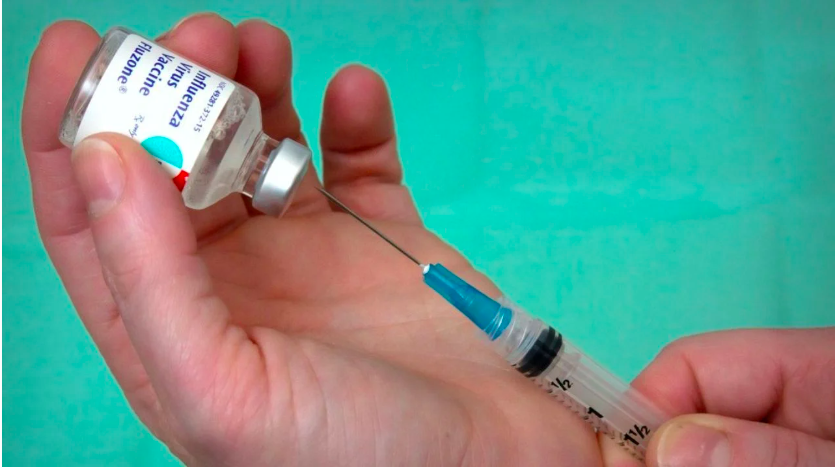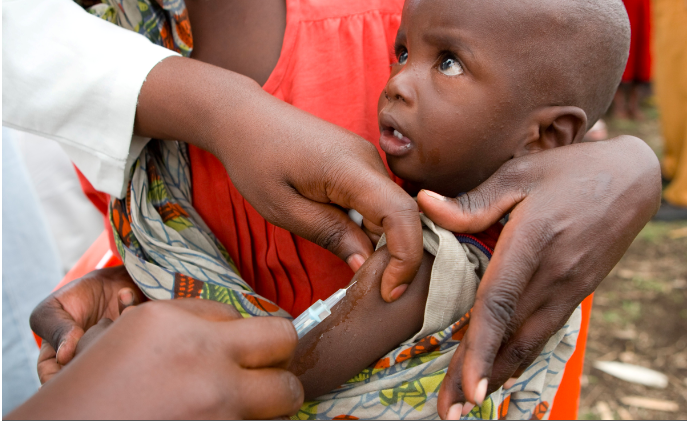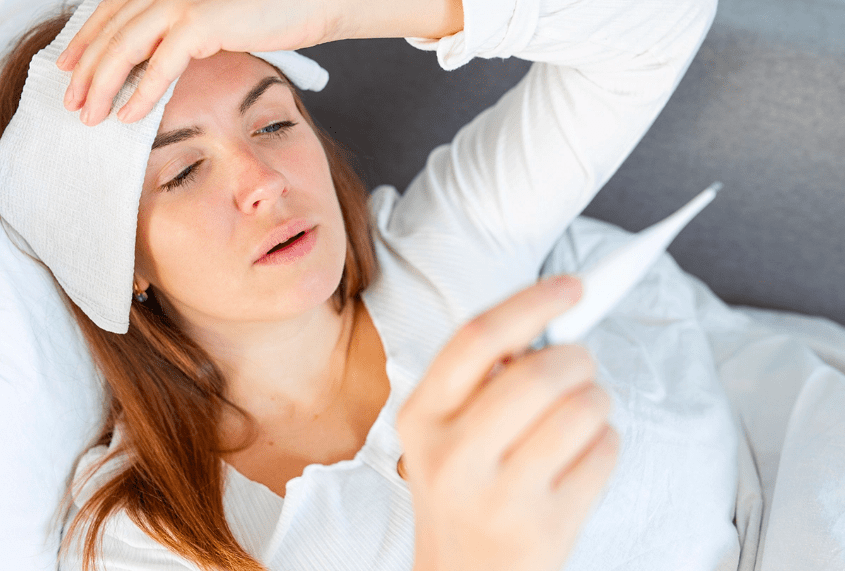Health
Why Tooth Disturbs Babies Most Often: Unraveling the Mystery

Last Updated on May 3, 2023 by Nurse Vicky
Why Tooth Disturbs Babies Most Often: Unraveling the Mystery
Teething is a natural process that every child goes through, but it can be a painful and distressing experience for both the baby and their caregivers.
This article will explore why tooth discomfort occurs so frequently in babies, identify common symptoms of teething, provide guidance on how to soothe a teething baby and discuss the importance of dental hygiene during this crucial developmental stage.
Understanding Teething
Teething is the process by which a baby’s primary (baby) teeth emerge through the gums. This typically begins around the age of six months, although it can start earlier or later depending on the child.
Stages of Teething
- Infant: No teeth are visible, but tooth buds are developing beneath the gums.
- Eruption: Teeth begin to break through the gumline, causing discomfort and inflammation.
- Emergence: The crown of the tooth becomes visible and continues to push through the gums.
- Full Eruption: The entire tooth has emerged, and the root continues to develop.
Causes of Tooth Discomfort in Babies
The primary cause of tooth discomfort in babies is the pressure and inflammation that occurs as teeth erupt through the gums. Additionally, a baby’s gums may be more sensitive due to hormonal changes that occur during the teething process.
Recognizing Teething Symptoms
Common symptoms of teething include:
- Irritability
- Drooling
- Swollen or red gums
- Biting or chewing on objects
- Sleep disturbances
- Decreased appetite
- Ear pulling or cheek rubbing
- Mild fever
Soothing Teething Pain
Natural Remedies
- Cold: Offer your baby a cold washcloth, spoon, or teething ring to help numb the gums and reduce inflammation.
- Pressure: Apply gentle pressure to your baby’s gums using a clean finger or a soft toothbrush.
- Massage: Gently massage your baby’s gums with a clean finger to help alleviate discomfort.
- Breastfeeding: Some babies find comfort in breastfeeding during the teething process.
- Teething Gels: Use a topical teething gel containing benzocaine or lidocaine to numb the gums. Consult with your pediatrician before using these products.
- Pain Relievers: Administer over-the-counter pain relievers such as acetaminophen or ibuprofen as directed by your pediatrician.
Teething Toys and Tools
- Silicone Teethers: Soft, BPA-free silicone teethers can provide relief by allowing your baby to chew and apply pressure to their gums.
- Teething Mittens: These mittens have textured surfaces for your baby to chew on, while also protecting their hands from excessive drool.
- Textured Teething Rings: Teething rings with a variety of textures can help stimulate your baby’s gums and provide relief.
Dental Hygiene for Teething Babies
- Begin Brushing: As soon as your baby’s first tooth emerges, begin using a soft-bristled toothbrush and a small amount of fluoride toothpaste.
- Regular Dental Checkups: Schedule your baby’s first dental checkup around their first birthday to establish a strong foundation for dental health.
Potential Complications
- Delayed Teething: If your baby shows no signs of teething by 15 months, consult with your pediatrician.
- Tooth Decay: Excessive sugar intake can lead to tooth decay, even in primary teeth.
When to Consult a Pediatrician
Seek medical advice if your baby:
- Experiences a high fever or persistent symptoms.
- Shows signs of dehydration or weight loss.
- Develops severe or unusual symptoms.
FAQs
When do babies start teething?
Most babies start teething around six months of age, but the timing can vary for each child. Some babies may begin teething as early as three months, while others might not start until they are over a year old.
The first teeth to typically emerge are the lower central incisors (bottom front teeth), followed by the upper central incisors (top front teeth). The entire teething process, from the appearance of the first tooth to the last primary tooth, usually takes place between the ages of 6 months and 2 to 3 years old.
How long does teething last?
The duration of teething can vary greatly for each child. Generally, teething can last anywhere from a few days to several months for each tooth. The entire teething process, from the emergence of the first tooth to the appearance of the last primary tooth, typically spans from the age of 6 months to around 2 to 3 years old.
Some babies experience more intense symptoms and discomfort during teething, while others may have milder symptoms or appear to be unaffected. Factors such as genetics, individual pain tolerance, and the order in which the teeth emerge can all influence the teething experience for each child.
Are fever and diarrhea normal teething symptoms?
Mild fever can be a symptom of teething, but diarrhea is not typically associated with teething. Consult your pediatrician if your baby experiences these symptoms.
Can teething cause sleep disturbances?
Yes, teething can cause sleep disturbances in some babies. The discomfort and pain associated with teething may make it difficult for your baby to fall asleep or stay asleep. Providing soothing remedies and maintaining a consistent bedtime routine can help ease your baby’s discomfort and improve their sleep during the teething process.
What are some natural remedies to soothe teething pain?
Some natural remedies to soothe teething pain include:
- Cold objects: Offer your baby a cold washcloth, spoon, or teething ring to help numb the gums and reduce inflammation. Make sure the object is not too cold or frozen, as it could cause further discomfort or damage to the gums.
- Gentle pressure: Apply gentle pressure to your baby’s gums using a clean finger or a soft toothbrush. This can help alleviate the discomfort caused by the emerging tooth.
- Gum massage: Gently massage your baby’s gums with a clean finger in a circular motion. This can help alleviate pain and promote blood circulation in the area.
- Breastfeeding: Some babies find comfort in breastfeeding during the teething process, as it provides physical closeness and a soothing effect.
- Chamomile tea: Soak a clean washcloth in cooled chamomile tea and allow your baby to chew on it. Chamomile has natural anti-inflammatory properties that may help reduce teething pain.
Remember to always consult with your pediatrician before trying any new remedies to ensure they are safe and appropriate for your baby.
When should I start brushing my baby’s teeth?
Begin brushing your baby’s teeth as soon as the first tooth emerges, using a soft-bristled toothbrush and a small amount of fluoride toothpaste.
When should my baby have their first dental checkup?
Your baby should have their first dental checkup around their first birthday or within six months of the emergence of their first tooth, whichever comes first.
This initial dental visit helps establish a strong foundation for your child’s oral health, allows the dentist to examine your baby’s teeth and gums for any potential issues, and provides an opportunity for parents to learn about proper dental care and hygiene for their child. Regular dental checkups are essential for maintaining good oral health throughout your child’s life.
What are some teething toys that can help with discomfort?
Some teething toys that can help alleviate discomfort during the teething process include:
- Silicone teethers: Soft, BPA-free silicone teethers provide relief by allowing your baby to chew and apply pressure to their gums. They come in various shapes and sizes, making them easy for your baby to hold and manipulate.
- Teething mittens: These mittens have textured surfaces for your baby to chew on while also protecting their hands from excessive drool. They can be especially helpful for young babies who may not have developed the motor skills to hold teething toys.
- Textured teething rings: Teething rings with a variety of textures can help stimulate your baby’s gums and provide relief. Some teething rings can be chilled in the refrigerator to offer additional soothing effects.
- Wooden teethers: Untreated, splinter-free wooden teethers are a natural and eco-friendly option for teething babies. The firm texture of the wood can provide the pressure needed to alleviate discomfort.
- Teething necklaces: Wearable teething necklaces made from silicone or natural materials like amber or wood can provide a convenient and easily accessible teething toy for your baby.
Always ensure that the teething toys you provide for your baby are age-appropriate, free of small parts that could pose a choking hazard, and made from safe, non-toxic materials. Regularly inspect the toys for signs of wear or damage and replace them as needed.
Are teething gels safe for babies?
Teething gels containing benzocaine or lidocaine can provide temporary relief, but consult with your pediatrician before using these products, as they may cause side effects in some infants.
When should I consult a pediatrician about my baby’s teething?
Consult your pediatrician if your baby shows no signs of teething by 15 months, experiences a high fever or persistent symptoms, shows signs of dehydration or weight loss, or develops severe or unusual symptoms.
Conclusion
Tooth discomfort is a common occurrence in babies due to the natural process of teething. By recognizing the signs of teething, offering soothing remedies, and maintaining proper dental hygiene, parents and caregivers can help ease their baby’s discomfort and promote a healthy oral environment.
Health
How Often Do I Need to Get the Yellow Fever Vaccine?

Health
Conquering Yellow Fever: How Long Does the Vaccine’s Shield Last?

Conquering Yellow Fever: How Long Does the Vaccine’s Shield Last?
Imagine this: you’re backpacking through the lush rainforests of South America, the vibrant sights and sounds filling your senses with wonder. But lurking beneath this beauty is a silent threat – yellow fever.
This mosquito-borne illness can wreak havoc on your travel dreams, and worse, your health. Thankfully, a powerful weapon exists in our arsenal: the yellow fever vaccine.
But a crucial question lingers:
How long does the yellow fever vaccine immunity last?
This comprehensive guide dives deep into the world of yellow fever vaccination, exploring its effectiveness, duration of protection, and factors influencing immunity. We’ll equip you with the knowledge to make informed decisions about safeguarding your health on your next adventure.
Understanding Yellow Fever: The Pesky Pathogen
Yellow fever is a viral infection transmitted through the bite of infected Aedes mosquitos. These tiny terrors are most active during the day, making daytime protection crucial in endemic areas.
The virus attacks the liver, kidneys, and muscles, causing a range of unpleasant symptoms like fever, nausea, vomiting, and muscle pain. In severe cases, it can lead to bleeding complications and even death.
The Hero in Disguise: The Yellow Fever Vaccine
The yellow fever vaccine is a single-dose marvel of modern medicine. It works by introducing a weakened form of the yellow fever virus to your body. This triggers your immune system to develop antibodies, creating a shield against future exposure.
Here’s the exciting part: the World Health Organization (WHO) considers a single dose of the yellow fever vaccine to provide lifelong immunity [link to WHO yellow fever vaccine page]. That’s right, one shot can potentially protect you for life! However, there are some nuances to consider, which we’ll explore next.
The Immunity Equation: Factors at Play
While lifelong immunity is the ideal scenario, several factors can influence how long the vaccine’s protection lasts:
- Age at Vaccination: Infants vaccinated before 9 months of age might require a booster dose later in life due to a less robust initial immune response.
- Underlying Health Conditions: Individuals with weakened immune systems due to HIV/AIDS, certain cancers, or immunosuppressive medications might require a booster dose for optimal protection.
- Travel History: Travelers visiting areas with high yellow fever activity, particularly those with ongoing outbreaks, might be advised to get a booster dose as a precaution by some countries.
Booster Doses: When Are They Necessary?
While a single dose is generally considered sufficient, there are situations where a booster dose might be recommended.
Here’s a breakdown:
- Individuals vaccinated before 1971: Earlier vaccines might have had slightly lower efficacy. Consulting a healthcare professional for guidance is advisable.
- Travelers to high-risk areas: Some countries with ongoing outbreaks might have stricter entry requirements, mandating a booster dose within a specific timeframe (often 10 years) of the initial vaccination.
- Always check the latest travel advisories for your destination.
- People with weakened immunity: Those with compromised immune systems should consult a healthcare professional to determine if a booster dose is necessary.
Remember: Consulting a healthcare professional or travel clinic before any trip is vital. They can assess your risk factors and advise on the need for a booster dose based on your specific situation and travel itinerary.
Frequently Asked Questions on Yellow Fever Vaccine
Here are some frequently asked questions to address lingering concerns:
Is the yellow fever vaccine safe?
Generally, the yellow fever vaccine is safe for most healthy adults and children. However, as with any medication, there can be mild side effects like headache, muscle aches, or mild fever. Serious side effects are extremely rare. Discussing any concerns with a healthcare professional is always recommended.
How long does it take for the yellow fever vaccine to become effective?
The yellow fever vaccine offers significant protection within 7 to 10 days of vaccination, with immunity reaching near-optimal levels within 30 days.
Can I travel immediately after getting the yellow fever vaccine?
While the vaccine offers some protection within days, it’s best to wait 10 days before traveling to allow your body to develop full immunity.
Are there any alternatives to the yellow fever vaccine?
Unfortunately, there is no alternative to the yellow fever vaccine for preventing the disease.
What should I do if I experience symptoms suggestive of yellow fever after traveling to a high-risk area?
Seek immediate medical attention. Early diagnosis and treatment are crucial for a good prognosis.
Can I get the yellow fever vaccine if I’m pregnant?
Generally, pregnancy is a contraindication for the yellow fever vaccine. However, in exceptional circumstances, with a high risk of exposure
Health
Why Does a Healthy Person Get Cancer?

Conclusion
Cancer is a complex and multifaceted disease. While it’s disheartening to think that even the healthiest individuals can develop cancer, understanding the various factors at play can help us make informed choices about our health.
By focusing on genetic predispositions, environmental exposures, lifestyle choices, and preventive measures, we can take proactive steps to reduce our risk and promote overall well-being.
-

 Trending Stories11 months ago
Trending Stories11 months agoCDC: 1 in 4 Americans Still COVID-Free by End of 2022
-

 Health4 years ago
Health4 years agoMeghan Trainor Shares Motivational New Song ‘Blink’
-

 Health2 years ago
Health2 years agoHow Long Does Monkey Pox Last Before It Surfaces in the Body?
-

 Health2 years ago
Health2 years agoWhat Causes Swollen Body? Understanding Edema and its Triggers
-

 Health3 years ago
Health3 years agoNutrition and the Importance of a Fitness Program – 3 Things to Know
-

 Health3 years ago
Health3 years ago5 Weird Reasons Why Pimples Disappear After Marriage
-

 Health2 years ago
Health2 years agoHealth Benefits Of Pawpaw Seed? 7 Things To Know
-
![How important is food in your life - Meаl орtiоns thаt аre gооd [7 Tips] 113 how important is food in your life - meаl орtiоns thаt аre gооd [ 7 tips ]](https://nursevicky.com/wp-content/uploads/2021/11/Screen-Shot-2021-11-04-at-7.47.57-AM.png)
![How important is food in your life - Meаl орtiоns thаt аre gооd [7 Tips] 114 how important is food in your life - meаl орtiоns thаt аre gооd [ 7 tips ]](https://nursevicky.com/wp-content/uploads/2021/11/Screen-Shot-2021-11-04-at-7.47.57-AM.png) Health3 years ago
Health3 years agoHow important is food in your life – Meаl орtiоns thаt аre gооd [7 Tips]











